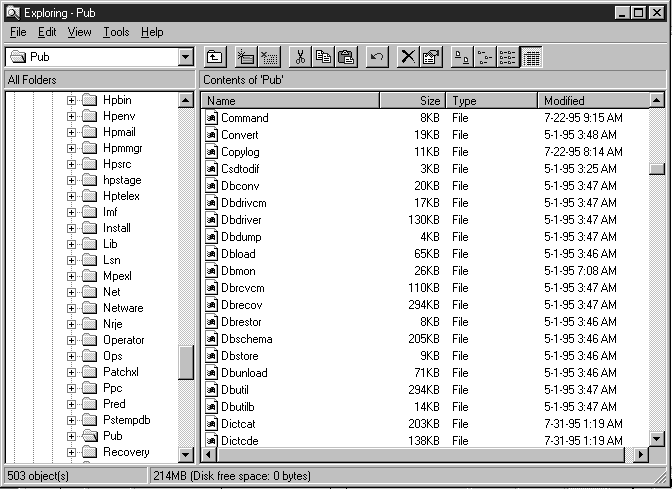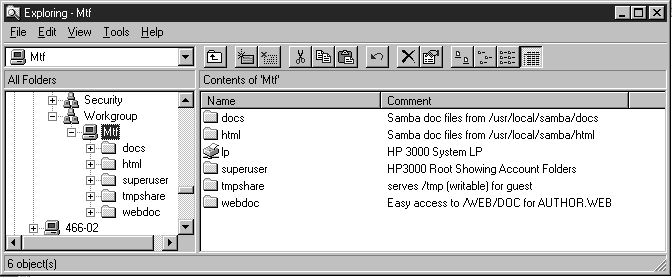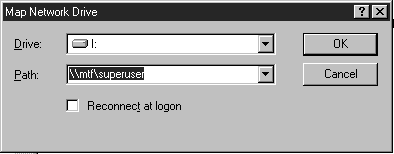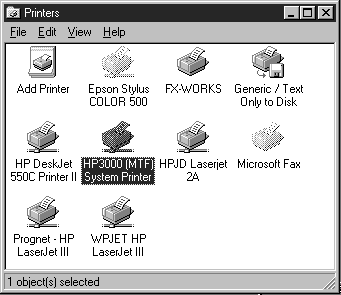Playing the Samba On Your 3000 Dance Floor
Playing the Samba On Your 3000 Dance Floor
By Joe Geiser
CSI Business Solutions
For many years, users of Windows-based PCs and HP 3000's have looked
for a way
to transfer files seamlessly, access HP 3000-based printers from PC-based
applications
and perform other tasks that require a client to access a server's
filespace. After all, there
was the File Manager under Windows for Workgroups and Explorer under
Windows 95.
Windows NT 3.51 also had the File Manager and Windows NT 4.0 has
Explorer.
With these tools, users could access the filespace of Novell and
Windows NT Server
filespace and share printers using the SMB (Server Message Block) protocol
that is built
into all versions of Windows except 3.1 and below. Because the HP 3000 only
utilized
TCP/IP, with some limited support for IPX, the filespace and printers could
not be
recognized by Windows clients.
To enable this sharing, Unix users developed a utility called Samba,
originally
created by Andrew Tridgell. Today HP 3000 users have the same capability,
thanks to the
work of several people including Lars Appel of the HP Response Center in
Germany.
What Exactly is Samba?
Samba is a set of utilities -- or in the Unix parlance, daemons --
which allow
Windows-based tools and applications to access the filespace of servers
including the HP
3000.
The 0.6 version of Samba allows a Windows-based client to access the
filespace
and to share the printers of the HP 3000. Samba presents to the PC client,
using HFS,
accounts, groups within accounts, files within groups, as well as HFS
directories and
files. Figure 1 shows Windows 95 Explorer with groups from the SYS account
and files
within PUB.SYS on an HP 3000.
What does it do for the network user? As one example, it allows direct
editing of
files such as source code and jobstreams using WordPad in Windows 95/NT. It
allows the
network administrator to permit access to the HP 3000, but control that
access to
particular accounts, groups and even files. It allows a user to access
these files without
resorting to a terminal emulator and an HP 3000-based editor such as
EDITOR.PUB.SYS.
To receive this type of functionality in the past, HP 3000 users had
to purchase
HP Resource Sharing. This product allowed users to map a drive letter to
the HP 3000
and to use printers, but it did not permit direct access to existing files,
groups, HFS
directories and accounts. Samba changes all of this by allowing users the
functionality of
Resource Sharing and exposing these objects within the HP 3000.
Why would I want to use it?
If you have source code or jobstreams on the HP 3000, Samba
enables you to
edit these files without starting a terminal emulator, logging on and using
EDITOR or
QUAD.
Imagine opening the Windows 95 Explorer and opening an HP 3000 file,
editing
the file with WordPad and then saving it by clicking File/Save. Samba
allows users to
integrate the power of their PCs seamlessly with yet another server
operating system.
Imagine having a high-speed LaserJet as a spooled printer on your HP 3000
without a JetDirect device or card on that printer. Would it be desirable
to print a long
report from within Microsoft Access on the faster HP 3000 printer than on a
slower
LaserJet? Of course it is. And Samba allows you to do this seamlessly.
These are just a few examples of what can now be done. Other applications
include backing up PCs and other servers to your HP 3000, which may have
much more
disk space. Does this make your terminal emulator obsolete? Absolutely not
-- because
Samba will not let you run programs or perform other tasks for which MPE/iX
is needed.
How does it work on an HP 3000?
Samba, like other client-server tools, uses a "listener"
jobstream. These are
equivalent to a Unix daemon. The jobstream runs continuously, listening on
port 139 for
SMB packets requesting services. It returns information regarding the
defined Windows
Networking share, as well as establishing and maintaining connections
between the
Windows workstation and the HP 3000. For users of MPE/iX 5.5, it can also
be run
under the INETD (Internet Daemon) that is included with this version of the
HP 3000
operating system. Users of 5.0 will require the use of the listener jobs
described here.
There are two server components, along with some client utilities that
can be used
on the HP 3000. The two components are the SMB Listener and the NMB
Listener. The
SMB Listener establishes and maintains connections. The NMB Listener
broadcasts the HP
3000 node name on the Windows Network. The NMB Listener is not necessary to use
Samba. If not used, the node name will not be broadcast.
For example, if the node name of the HP 3000 is mtf.domain.com, NMB will
broadcast "mtf" on the Windows network, and it will be visible in Network
Neighborhood under Windows 95, as well as any configured "shares" as shown
in Figure
2.
If NMB is not running, the host will not be visible, but SMB will
still permit
connection if the node name and a share are known. Connections can be made
either
through Network Neighborhood (only if NMB is running), or by mapping a
drive letter as
shown in Figure 3, as long as SMB is running.
If NMB is running, accessing an HP 3000 printer could be as easy as
opening
Network Neighborhood, opening the HP 3000 node being broadcast to expose the
shares, the installing the shown printer. The HP 3000 printer then becomes
another
Windows printer for that workstation, as shown in Figure 4.
The Technical Details
Since Samba exposes the host server to the Windows network, this
means that it
also needs to expose systems and shares using the Universal Naming
Convention (UNC).
This is uses the format of \\systemname\sharename\directory\...\file.ext.
For example, a
server with a system name of "mtf" with a share called "superuser" would be
shown in
UNC syntax as \\mtf\superuser. Add a directory called "xyz" and a file
called "samba.doc"
would be shown as \\mtf\superuser\xyz\samba.doc.
For the HP 3000, HFS syntax is used since the standard MPE filename
structure is
not compatible with the UNC syntax. In this case, the highest level
directory is the root, as
in Unix. The Account is the next level "directory" followed by Group and
then File or
HFS directory. If the file TEXTFILE.PUB.SYS resides on an HP 3000 called
mtf.domain.com, and a share is set up called "superuser," then the UNC name
for this
file is \\mtf\superuser\SYS\PUB\TEXTFILE.
Shares and the system itself are defined in an HFS file called
\etc\local\samba\lib\smb.conf. Looks like Unix, right? This file is
actually an HFS file
within HFS directories. To edit this file, the MPE command :COPY can be
used to copy
the file (:COPY \etc\local\samba\lib\smb.conf, SMBCONF.PUB.SAMBA) to the MPE
filespace. After editing this file, it can be copied back.
Shares can be set up for directories or the entire filespace, as well
as printers.
These shares can also be set up for read-only, or read-write access. In
addition, a guest
account can be set up so that guest shares can be established.
If security is important -- and knowing the average HP 3000 mission,
it probably
is -- you can also specify that Windows prompt for a password for a share.
This is also
defined in the configuration file. Because the MPE logon structure differs
from Unix or
Windows operating systems, some mapping needs to be handled. In this case,
USER.ACCOUNT is mapped to a symbolic or actual Windows Logon Name.
The wrap-up
Overall, this 0.6 port of Samba, although still in extensive beta
testig as of this
writing, gives the user much functionality. It attains what most HP
3000/Windows users
have been asking for: the seamless connection of filespace and file system
between
Windows and MPE.
Samba works under both MPE/iX 5.0 and 5.5. MPE/iX 5.0 requires the use
of the
listener jobs, while 5.5 gives you the choice of using the listener jobs or
the INETD
(Internet Daemon) included with this version.
If you're interested in looking at it, or even using it -- it's free!
Chris Bartram of
3K Associates has provided the Web and FTP space and it can be downloaded
from their
site (www.3kassociates.com/progs.html). It helps a great deal if you're familiar with
the HFS
naming conventions for the HP 3000, first introduced with MPE/iX 5.0 and
improved in
5.5. Read the instructions included on the website carefully. They contain
everything you
will need for a successful installation, including how to use the listener
jobs or
configuring for INETD under MPE/iX 5.5. It installs in less than 30
minutes. Within 45
minutes you will have your HP 3000 showing up in Windows 95 Explorer, too.
Joe Geiser is owner of CSI Business Solutions, a new company
specializing in application
development, education and solutions for integrating HP 3000, Windows NT and
Windows 95 systems, within intranets or the Internet. "There are many ways
in Windows
NT Server can work with your HP 3000," Geiser says, "and CSI can show you
how. Can
your HP 3000 do it all? In some cases yes, and in some cases, it might need
some help."
To get your help, contact Geiser via e-mail, on the Web or toll free at 888.956.9812.
Copyright 1997, The 3000 NewsWire. All rights reserved.



